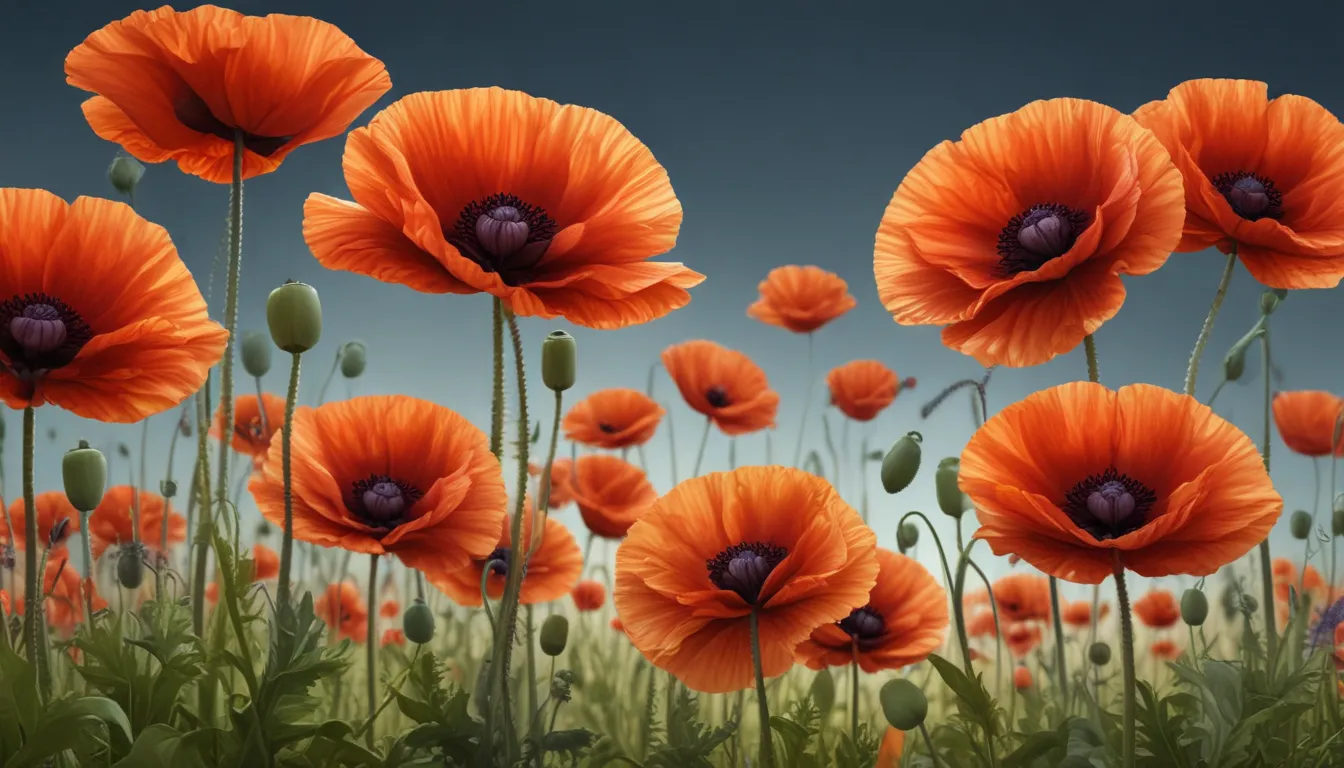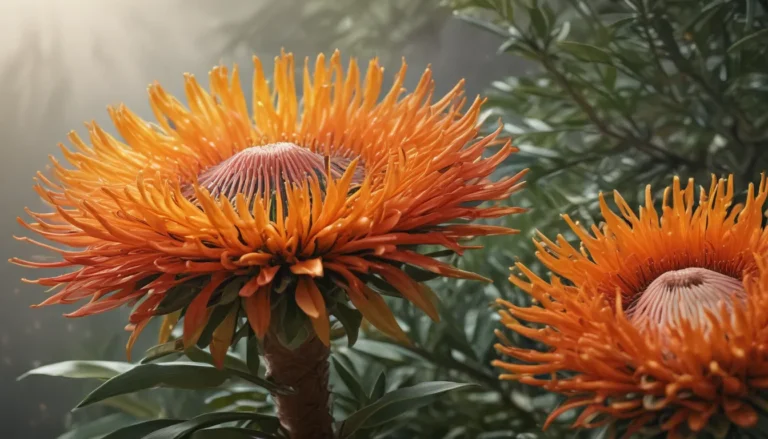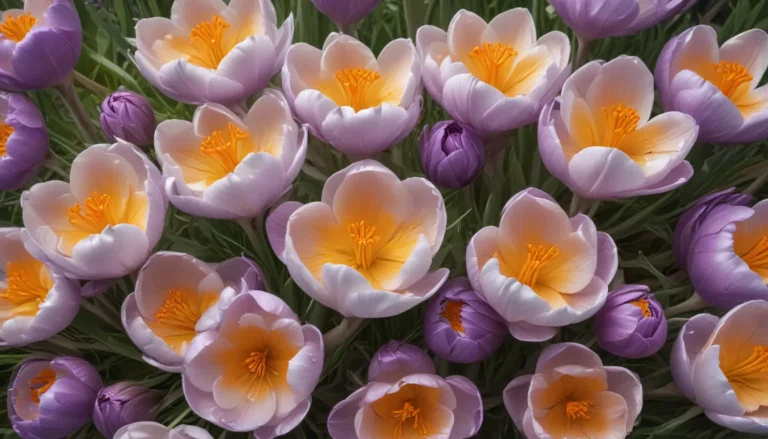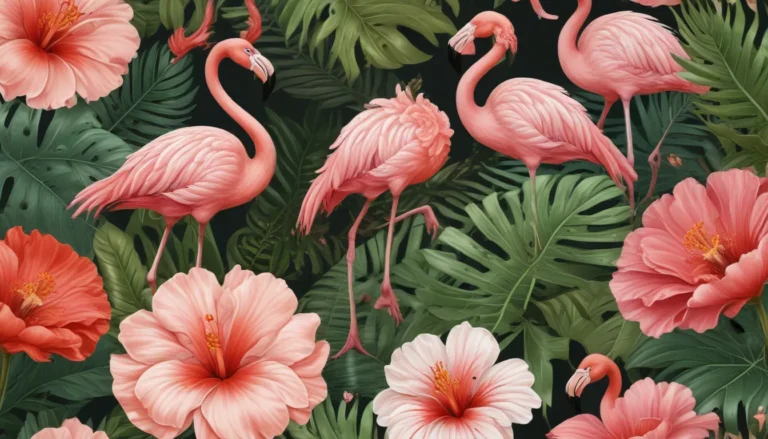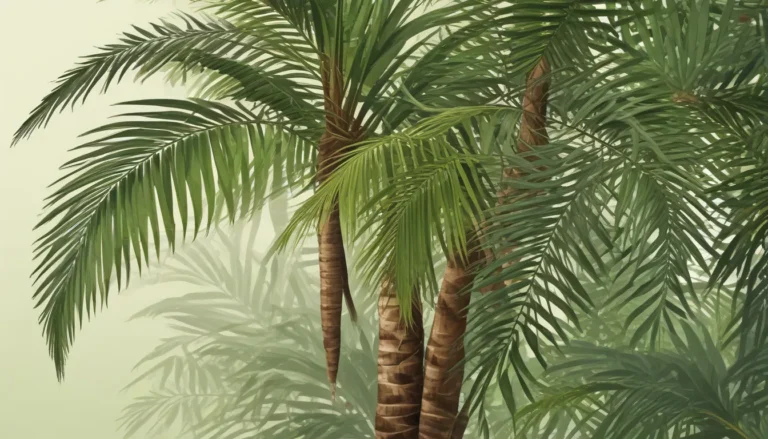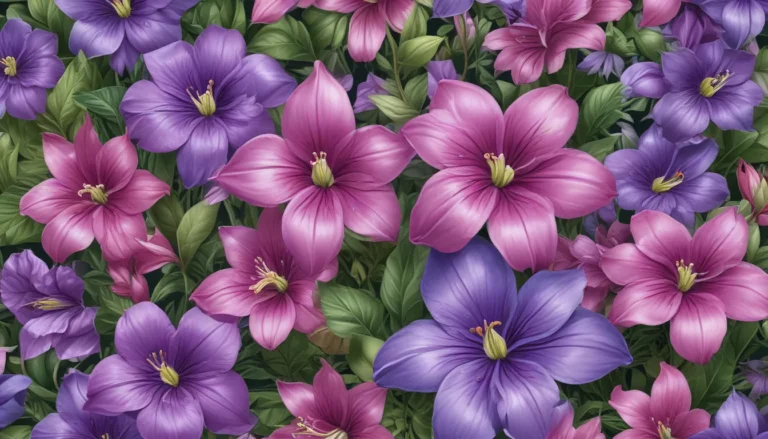The pictures we use in our articles might not show exactly what the words say. We choose these pictures to make you interested in reading more. The pictures work together with the words but don’t take their place. The words still tell you the important facts.
Are you captivated by the mesmerizing beauty of poppies? Do you often find yourself marveling at their vibrant colors and delicate petals? If so, you're not alone. Poppy, scientifically known as Papaver, is a flower that has captured the hearts of nature enthusiasts and gardeners worldwide. But beyond their aesthetic appeal, poppies have a fascinating story to tell. From their rich history to their diverse cultural significance, there's so much to discover about these stunning plants. Join us on a journey as we explore 14 captivating facts about poppies that will deepen your appreciation for this beloved flower.
Unveiling the Enchanting World of Poppies: Exploring 14 Intriguing Facts
Poppies: More Than Just Pretty Flowers
- Historical and Cultural Significance: Poppies have played a significant role in various cultures throughout history. They are not merely beautiful flowers but symbols of beauty, resilience, and remembrance. From traditional medicine to inspiring literary works, poppies have a multifaceted story to share.
The Allure of Poppy: A Flowering Plant with Aesthetic Appeal
- Vibrant Colors and Delicate Petals: Poppy is a flowering plant renowned for its vivid colors and delicate petals. Belonging to the Papaveraceae family, poppies are cultivated for their aesthetic beauty and enchanting presence in gardens.
Poppies Around the Globe: A Worldwide Presence
- Global Distribution: Poppies can be found in various regions worldwide, including Asia, Europe, North America, and Australia. Each geographical area boasts its unique species of poppies, adding to the diversity and allure of these captivating flowers.
The Opium Poppy: Narcotics and Beyond
- Cultivation for Narcotics: The opium poppy (Papaver somniferum) is one species of poppy cultivated for its sap, which contains opioids used in the production of narcotics like morphine, codeine, and heroin. However, not all poppies are used for narcotics, with some serving different purposes.
Poppies in Culture: Symbolism and Tradition
- Symbolic Meanings: Poppies hold symbolic significance in various cultures, symbolizing remembrance, honor, and sacrifice, especially in times of war. They have become iconic symbols of respect and tribute to fallen soldiers and veterans.
Culinary Delights: Poppies in Cooking
- Edible Seeds: While some poppy species are associated with narcotics, others, such as the breadseed poppy (Papaver somniferum), are cultivated for their edible seeds. These seeds are commonly used in baking and cooking, adding a flavorful and nutritious touch to culinary creations.
Healing Powers of Poppies: Medicinal Uses
- Traditional Herbal Medicine: Poppies have been utilized in traditional medicine for centuries, believed to possess various medicinal properties. From pain relief to relaxation, poppies have been valued for their therapeutic effects in alternative healing practices.
The Red Poppy: A Symbol of Remembrance
- Flanders Poppy: The red poppy, also known as the Remembrance or Flanders poppy, holds a special place as a symbol of remembrance for veterans and fallen soldiers. Its association with honoring sacrifices dates back to the aftermath of the First World War.
Poppy in Art: A Muse for Creativity
- Artistic Inspiration: The striking colors and unique shapes of poppies have long inspired artists across different mediums. From paintings to photographs, poppies have been immortalized in art, capturing their beauty and allure for generations to come.
Literary Inspirations: Poppies in Poetry and Prose
- Symbolism in Literature: Poppy flowers have found their way into numerous poems, novels, and literary works, symbolizing themes of beauty, fragility, and the transient nature of life. They evoke a sense of poignancy and grace in the world of literature.
California Poppy: The Pride of the Golden State
- State Flower: The California poppy (Eschscholzia californica) holds the prestigious title of the official state flower of California. Known for its vibrant orange hue and resilience in challenging environments, the California poppy symbolizes the spirit of the Golden State.
Fleeting Beauty: Poppies’ Short Lifespan
- Transient Blooms: Despite their captivating beauty, poppies have a relatively short lifespan, with most varieties blooming for only a few days or weeks. This ephemeral nature makes their presence all the more precious and cherished by admirers.
Self-Sowing Wonders: Poppies’ Natural Propagation
- Self-Sowing Characteristics: Many poppy species are self-sowing plants, dropping seeds that germinate and grow without human intervention. This unique trait enables poppies to spread and thrive in diverse landscapes, showcasing their adaptability and resilience.
Medicinal Marvels: Healing Properties of Poppies
- Therapeutic Uses: Beyond their narcotic potential, certain poppy species have been valued for their medicinal properties in traditional healing practices. From treating coughs and respiratory ailments to addressing insomnia, poppies offer a wealth of therapeutic benefits.
Nature’s Pollinators: Poppies and Bees
- Bee-Friendly Flowers: The bright colors and nectar-rich blooms of poppies make them a favorite attraction for bees and other pollinators. Serving as vital sources of food, poppies play a crucial role in supporting pollination and biodiversity in ecosystems.
Embark on a Journey of Discovery with Poppies
In conclusion, the world of poppies is a captivating blend of beauty, history, and utility. Whether admired for their symbolic meanings, culinary uses, or medicinal properties, poppies continue to enchant us with their grace and significance. As you delve deeper into the realm of poppies, may you uncover new layers of appreciation for these exquisite flowers that have captured the hearts of humanity for centuries to come.
Explore More with Poppies: Delve Deeper into Their Fascinating World
Frequently Asked Questions
Q: What is the significance of poppies?
A: Poppies hold diverse symbolic meanings across cultures, representing remembrance, peace, beauty, and fertility. They are deeply intertwined with themes of honor and sacrifice in various contexts.
Q: Are all poppies used to produce opium?
A: No, not all poppies are cultivated for opium production. While some species like the opium poppy contain opioids, others like the Iceland poppy or Shirley poppy do not possess significant amounts of opiates.
Q: Do poppies come in only one color?
A: Poppies display a range of colors, including red, pink, orange, yellow, and white. While red poppies are commonly associated with remembrance, other color variations add to the diversity and allure of these captivating flowers.
Q: Can poppies be grown in home gardens?
A: Yes, many varieties of poppies are well-suited for cultivation in home gardens. It's essential to consider the specific growth requirements of each species to ensure successful gardening outcomes.
Q: Are poppies resistant to pests and diseases?
A: While poppies are generally low-maintenance plants, they may be susceptible to pests like aphids, diseases like powdery mildew, and fungal infections. Regular monitoring and care practices can help mitigate these potential issues and ensure healthy plant growth.
As you venture into the enchanting world of poppies, may you discover the hidden wonders and captivating stories that these flowers have to offer. Embrace the beauty, history, and versatility of poppies as you deepen your connection with nature's exquisite creations. Join us on this journey of exploration and appreciation for the fascinating world of poppies, where each petal holds a tale waiting to be told.
